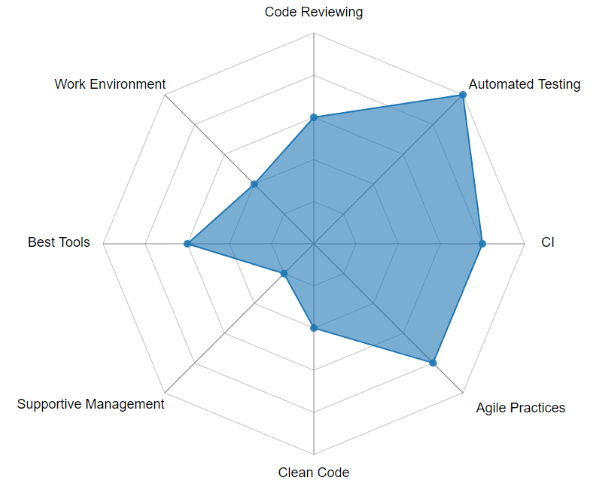
In business/personal coaching there is an idea of a “wheel of life”. The idea is that you evaluate different dimensions of your life and plot them on a wheel. Ideally the wheel should be balanced (and as large) as possible. If the wheel is crooked, you know what areas need to be improved to create a better wheel that turns more easily. When the wheel turns more easily, you get better results.
In a similar vein, the Software Development Wheel allows you to evaluate your overall software development experience.
The tool below can be used by individual developers, the software development team as a whole, or team leaders/managers.
To generate your own wheel fill out the form below.
Each dimension is rated from 1 (“very little or none”) to 5 (“awesome, doing everything possible”) and descriptions for the dimensions are included below.
Be sure to share this page with your fellow developers, team leaders, and management as it’s a great way to start a conversation about how to improve things.
More than one person looking at code before it is released. For example: pair programming, code reviews mob programming, etc.
Tests than can be (and are) run periodically to check that code is working as expected. For example: unit tests, integrations tests, UI tests, performance tests, security tests, etc.
Code from developers is regularly combined together to check that it all works together. Usually automated with a build system/server such as TeamCity, Jenkins, VSTS, etc.
Codebase and development teams evolve over time. For example: incremental development, shorter feedback loops, self-organizing/cross-functional teams, etc.
Code that is easier to change. For example: readable code, good object oriented practices (SOLID), YAGNI, use of appropriate design patterns, well-named variables/functions/etc.
Management exists primarily to remove things that stop/slow down the team delivering the software. For example: shielding the team from management politics, empowering individuals and teams to make decisions, caring about people, providing training, etc.
The team has the best tools that are available to do their work. For example, powerful hardware, latest versions of IDEs, multiple monitors, etc.
Comfortable work environment. Includes: comfortable ergonomic chairs/desks, standing desks, peace and quiet, air conditioning, plants, cleanliness, etc.
SHARE: